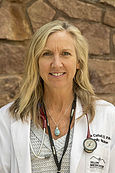
05 Mar Medical Moment: Mammograms
Telluride Inside… and Out is proud to feature the Telluride Medical Center’s MEDICAL MOMENT, a weekly column that answers common medical questions in pop culture. Have a question for the doctors? Click here to send.
Nationally certified Physician’s Assistant Laura Cattell answers this week’s question: What should women know about mammograms?
The goal of a screening mammogram is to detect disease before the onset of symptoms (like a lump that can be felt). Breast cancers found during screening exams are likely to be smaller and confined to the breast. The size of breast cancer and whether or not it has spread beyond the breast are important factors in predicting the prognosis of the disease. Most providers feel early detection tests such as mammograms can save thousands of lives.
The guidelines for when and how frequently to receive mammograms depend on the medical organization. The American Cancer Society’s guidelines for women with average risk for breast cancer are as follows:
-
Age 40-44 women have the choice to start annual screening
-
Age 45-54 women should receive mammograms annually
-
Age 55 and older women may choose to receive a screening annually or every two years and continue as long as they are in good health.
Additional factors will influence an individual’s risk of breast cancer and may play a role in when to begin screening.
Factors that increase your risk for breast cancer:
-
Long-term use of hormone replacement therapy
-
Personal history of breast cancer or non-cancerous breast diseases
-
Family history of breast cancer
-
Known BRCA1 or BRCA2 gene mutation
-
Treatment with radiation therapy to the breast/chest particularly if before age 30
-
Exposure to diethylstilbestrol (DES) (for example, if you took DES during pregnancy or your mother took DES during her pregnancy with you)
-
Dense breasts as determined by mammogram
-
Alcohol consumption (moderate drinking is considered 1 drink per day for women)
Factors that decrease your risk:
-
Having had your first menstrual period after the age of 12
-
Starting menopause before age 55
-
Being under the age of 35 when you had your first child
-
Have given birth to multiple children
-
Breastfeeding your children
-
Getting regular exercise
-
Maintaining a healthy weight
There are some limitations and potential risks associated with mammogram screenings including exposure to very low doses of radiation. Most experts believe that the benefits of screening outweigh exposure. Mammograms are not a 100% accurate and may be more difficult to interpret in younger women. In the case of false positive exams, mammograms may lead to additional testing including additional views, ultra sounds and possible biopsy. However, less than 10% of mammograms will lead to this additional testing.
Early detection saves lives, consider baseline screening at age 40.
***Telluride Medical Center Quickfacts 2016 -For a brief update on the current state of the Telluride Medical Center, growth figures for 2015, plans for a new facility in Mountain Village, as well as the funding strategy for the new facility, click here.
Have a Medical Moment question you’d like answered by our team? Send it to jriley@tellmed.org




Sorry, the comment form is closed at this time.